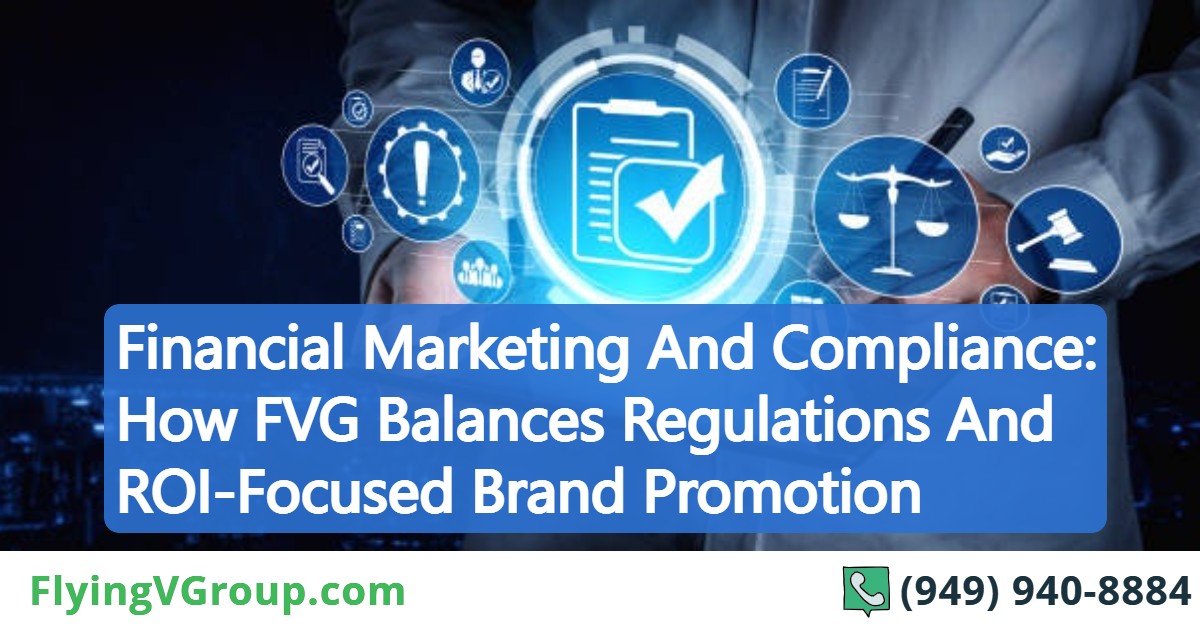Financial services are one of the most regulated industries, and it is not a surprise that marketing financial services also has a set of regulations to comply with. Financial institutions of the day are complex entities with multiple products and services they offer, and these products often fall under different categories. Banking, securities, advisory, and insurance are all governed by different regulations, which also apply to marketing.
Financial services marketing is a growing area with companies spending heavily on ads. As of 2020, financial services marketing accounts for almost 14% of all digital ad spends. The total spend was estimated to be around $23.6 billion at the end of 2021. Financial services keywords are also hotly contested in the bidding process for PPC ads as they have high search volumes and because of the substantial lifetime value that the customers offer once they sign up. The digitization of financial services and the rise of fintech have made the competition tougher, and to stand out you need to be innovative.
However, balancing regulation and compliance as well as generating ROI from the marketing campaigns is a constant struggle facing financial services companies. It’s also easy to see regulations as complications. But there is a better way. Through some very basic principles, you can easily be compliant with regulations and also generate great ROI for your financial services marketing strategy.
FVG has a track record of doing this for leading financial institutions for years now. We will go through some of these strategies in this blog and also look at what are the major regulations that affect digital marketing in the financial services industry. Here we go.
What Are the Government Regulations Affecting Marketing?
There are several rules and regulations enacted through various regulatory bodies. Some states have their own regulations in place too. Below is a list of common regulations that apply to the various financial services organizations depending on the services they offer.
Banking – Regulated by Consumer Financial Protection Bureau (CFPB)
- Truth in Lending Act (1968)
- Truth in Savings Act (1991)
- Unfair, Deceptive, or Abusive Acts or Practices Act (UDAAP)
- Equal Credit Opportunity Act (ECOA)
- Fair Housing Act (FHA).
These acts together regulate the marketing of all banking services including savings and lending products.
The Truth In Lending act makes sure that banks and financial institutions are transparent about the terms, fees, and other particulars regarding all kinds of lending products including credit cards, mortgages, and loans. The potential clients or borrowers should be made aware of the rates of interest, the processing fees, and other charges involved as well as the terms of the agreement. The Truth in Savings Act covers the same for savings products such as deposit accounts. This means that while marketing these services, the communication should clarify the details too and not just go with a top-level message.
UDAAP is a principles-based act that enforces a lot of regulations on financial institutions in general including banks regarding their trade practices. The law is aimed at preventing customers from financial losses owing to unfair or deceptive practices by the institutions. UDAAP applies to marketing practices too. Institutions are not allowed to misrepresent facts and figures, hide charges, and other such measures while promoting products or services.
ECOA and FHA are more in line with anti-discriminatory practices. These acts prevent financial service providers from discriminating based on age, gender, sexual orientation, race, marital status, and more. For marketing teams, this means that the messaging should be inclusive and provide opportunities for all while offering a service or product.
Securities industry – Financial Industry Regulatory Authority (FINRA) and SEC
The rules and regulations under FINRA and SEC rules are aimed at regulating the securities industry. Securities have a lot more inherent complexities as products than banking services and it’s easy to be confused as a new customer if you are not aware of the nitty-gritty of the products involved. These are the major rules that regulate advertising and marketing for securities products.
- Rule 2220. Options Communications
- Rule 3230. Telemarketing
- Rule 2210. Communications with the Public
- Investment Advisers Act of 1940
- Securities Act of 1933
These acts and rules lay down a set of regulations for compliance while marketing financial products in the securities domain. Mostly the rules forbid using charts and past performance as sole methods of selling, using past recommendations as the basis, and ensuring that the communication remains fair and balanced with total clarity about the charges and the fee involved as well as the risks involved.
Balancing Regulations and ROI to Build Winning Marketing Campaigns
Now to the crux of the matter. How can you stay compliant and at the same time deliver results in marketing of financial services products? It is often the case that you are relying on various marketing channels to communicate your message, and you need multiple touch points with your customer. Regulatory compliance is applicable to all these channels, and hence you need a more coherent marketing strategy.
Here are some tips from our experience of working with leading financial institutions that actually work.
Make Compliance Central to the Marketing Strategy
Being compliant with regulations cannot be an afterthought, It has to be front and center. Regulations are there for a reason. Customers should know what they are signing up for and what are the various aspects of the product/service that would impact them. In most cases, being compliant is about being transparent and honest in communications and presenting the whole picture.
There is a certain level of mistrust that comes with the job when potential customers are dealing with a financial institution. The primary aim of your marketing strategy should be to build trust and this is the case with most industries and not just financial services. If your goal is to build trust, that would mean communicating clearly and effectively.
Your social media strategy, content marketing strategy, and all other marketing plans should have plans to ensure compliance. The communication should also involve enough details about the charges and service fees involved as well as the risks that the customers are taking on. This would ensure that the customers trust you more and of course generate more business in the longer run.
Focusing on Customer Experience
The majority of marketing today, especially in digital channels, is about building a great customer experience. Focusing on this as a goal is a great way to stay compliant and also to generate long-term value from marketing. A smoother customer experience would mean that the customers have all the information they need without having to jump through hoops. It would also mean alignment in communication across the different channels.
If you are using landing pages for your campaigns, make sure that there are relevant links there to explore more about the products or understand what the risks and rewards are for each product or service you offer. Making sure that customers have the option to talk to representatives is also key because the products may not be as simple to understand.
If you are relying on agents and external financial advisors to sell products or services, ensuring that they are also following the rules and talking the same language as you is important. This ensures a unified and frictionless user experience. Remember that the goal is not to overpromise. But to give customers exactly the information they are looking for so that they can make an informed decision.
Give Customers the Power
In an age of unparalleled noise, it is a great idea to let the customers decide what they want to know and when. Giving them the power to choose is a great way to reduce the risk of non-compliance.
Be extra careful about Do Not Call lists if you are using telecalling as a part of your marketing. The same goes for email marketing. Customers should be given the option to choose what emails to get, and which products they want to learn about, and also ensure that they can unsubscribe from the email lists at any time.
Customer data safety is critical in such a sensitive space. Selling or sharing data with third-party vendors should be avoided as much as possible. If you do it, make sure that you have the customer’s consent before you do it.
Automation is a great way to stay on top of all these. Investing in a good marketing tool will help you segment the customer base as per their needs, and ensure that the communication with the target audience remains optimized. It also helps improve the digital experience of the customers. Looking at data to optimize your campaigns continuously is also important to boost ROI.
Create Great Authentic Content
Authentic content has a place in the highly regulated financial services sector. However, your content strategy needs to be tailored to ensure that no rules are being broken. SEO is an important part as well, given how highly competitive the paid search engine marketing space is. Content helps you bring in organic traffic and also gives you an opportunity to present your story.
Good articles and blogs explaining how you work and the process you follow allows customers to understand your brand and also to get a sense of how they will be taken care of. Authentic content builds credibility and positions you as a thought leader in front of the consumer.
You will have to be cautious while using case studies or testimonials as they can easily fall afoul of regulations. Webinars and videos are also popular ways to connect with the audience and improve your brand awareness. Whatever content you create, ensure that there are several rounds of checks.
Using Social Media marketing
It is possible to be an exciting presence on social media even in what is ordinarily considered a ‘serious industry’. You would need specific plans for different social media platforms so as to maximize results. It‘s important to not just use social media to share information or blogs. Social media is a great way to listen to the target audience and to hear what matters to them.
Parting Thoughts
Marketing a financial brand is not easy. But it does not have to be a complex affair either. A clear understanding of the regulations and a commitment to building an authentic brand is all it takes to simplify marketing financial services.
Understanding the spirit of the rules will go a long way in ensuring compliance. Most of it is about transparency and ensuring there is no misrepresentation. Whatever marketing techniques you are using, if you are not transparent or if you are misrepresenting the product, it is unlikely to succeed anyway.
All your marketing efforts are hinged on being compliant. Taking help from experts is advised if you are unsure of how to balance compliance with ROI. FVG’s work with financial services institutions gives us the necessary know-how to deliver compliant marketing campaigns without compromising on the results. Drop us a line to get started today!






0 Comments